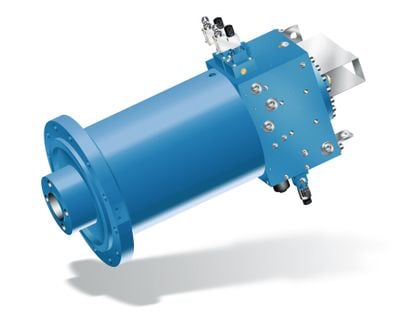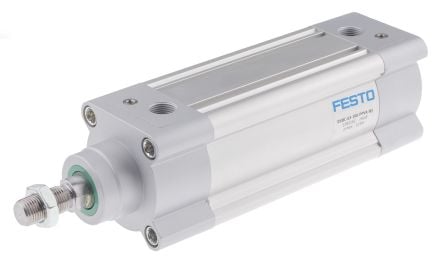In this article, we take a look at hydraulic, pneumatic, and electric actuators and how they are used in different scenarios.
Actuators are key in automating processes as they convert energy into a form of mechanical motion. What types of actuators are available to engineers and when should they be used?
What is an Actuator?
Generally speaking, an actuator is a device used to control a mechanical system whether it be a ramrod, a tool feed, or a valve control system. Unlike a mechanically hand-operated device (such as an isolation valve with a handle) they are controlled via a signal.
This is done in a very similar way to electronic amplifiers, where a small energy input signal can control a significantly larger energy output. Due to this, actuators can be operated remotely which makes them suitable for industrial use.
Actuators come in different types including hydraulic, pneumatic, and electric. It is essential to consider the type and certain characteristics of the actuator including maximum force, speed, and operating conditions. Let’s take a look at the three main actuators, how they work, and when to use them.
When Should You Choose Hydraulic Actuators?
Hydraulic actuators are those that are controlled by a hydraulic system that uses a fluid to transmit the control power. Since fluids are incompressible, they are very useful for fine control as well as being able to deliver large amounts of power (hence making them useful for heavy-duty actuators).

Hydraulic actuator from Bosch Rexroth AG. Image used courtesy of Bosch Rexroth AG.
Hydraulic systems have problems regarding the speed of operation and cannot produce high acceleration motion on the actuator. Hydraulic systems will also often be reliant on a secondary actuator as the fluid in the line can only be pushed via an external mechanical force that could come from an electric motor or an engine.
Any fluid can be used in a hydraulic line but the most common fluids used are mineral oil or water. Hydraulic lines can also be useful in environments involving explosive atmospheres as there is no source of ignition (i.e. a spark) but they can be under large pressures and be hot.
Therefore, hydraulic systems should be properly maintained otherwise serious injury can occur during a failure. Hydraulic systems generally rely on a fluid reserve which can increase the weight of the overall system.
Benefits and Uses of Pneumatic Actuators
Pneumatic actuators are very similar to hydraulics in that fluid is used to provide actuation.
However, unlike a hydraulic actuator, a pneumatic actuator uses air instead of a liquid. A pneumatic actuator is also capable of heavy loads but because air is compressible pneumatic systems are energy inefficient.

Festo’s DSBC Series pneumatic actuator. Image used courtesy of Festo.
When pressure is applied to a pneumatic line there is a delay in energy transfer which not only affects the maximum acceleration of a pneumatic system but response time as well. Pneumatics use air as their energy transfer medium which means that they are able to operate within a temperature range of (-40°C to +250°C), and are ideal for explosive atmospheres. But pneumatic actuators also suffer from implementation in that a pneumatic actuator is commonly designed for one job and cannot be used reliably in other applications.
Electric Actuator’s Suitable for Use in Specific Environments
An electric actuator is one where mechanical motion is generated using an electric force. These actuators almost always use a motor and can have their rotational motion converted into linear motion via the use of a screwdriver.
Electric drive systems are incredibly accurate and the use of gears can provide fast action or high torque, are reputable, easily controlled by computer systems, and can provide feedback on position. While electric motors are incredibly efficient and easy to automate, they are particularly problematic in hazardous environments as they are prone to internal sparking.

ETH080 high force electric actuator from Parker Hannifin. Image used courtesy of Parker Hannifin.
They are also not ideal for environments involving corrosive or conductive liquids as these can either damage electrical connectors or result in short circuits. They are ideal in environments where hydraulic or pneumatic failure would provide to be too disastrous as they do not have fluid lines or gas under compression.
The three main actuator types all have their advantages and disadvantages and recognizing which one to use is critical. If you are dealing with a potentially dangerous atmosphere then hydraulics or pneumatics can be very useful but if fine control is required then an electric motor is better suited.
Electric motors can also be useful for applications that may require frequent adjustments and change but understand that they often have many mechanical parts that can wear down over time (such as brushes, gears, and teeth).
What kind of actuators do you use?
Copyright Statement: The content of this website is intended for personal learning purposes only. If it infringes upon your copyright, please contact us for removal. Email: admin@eleok.com
